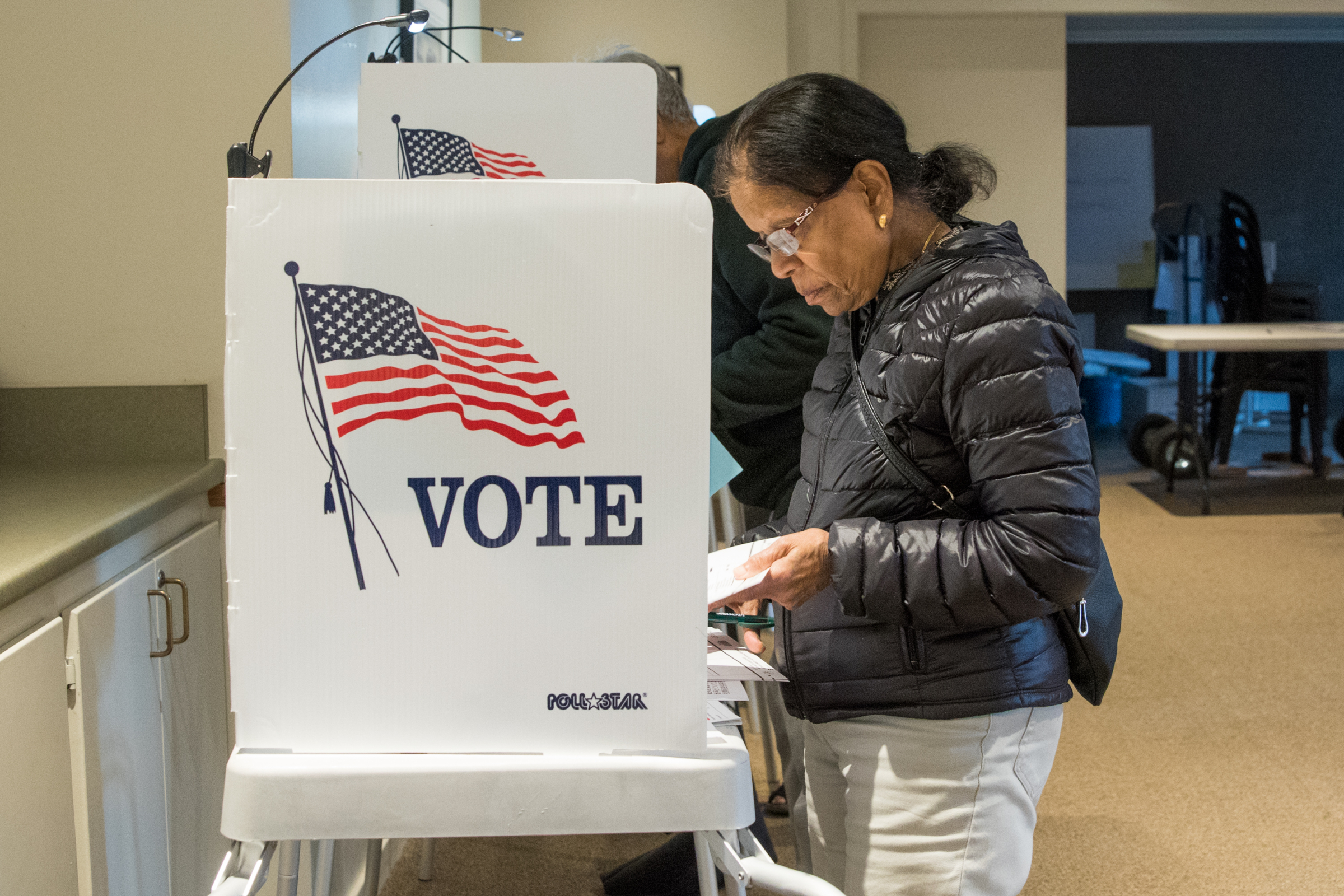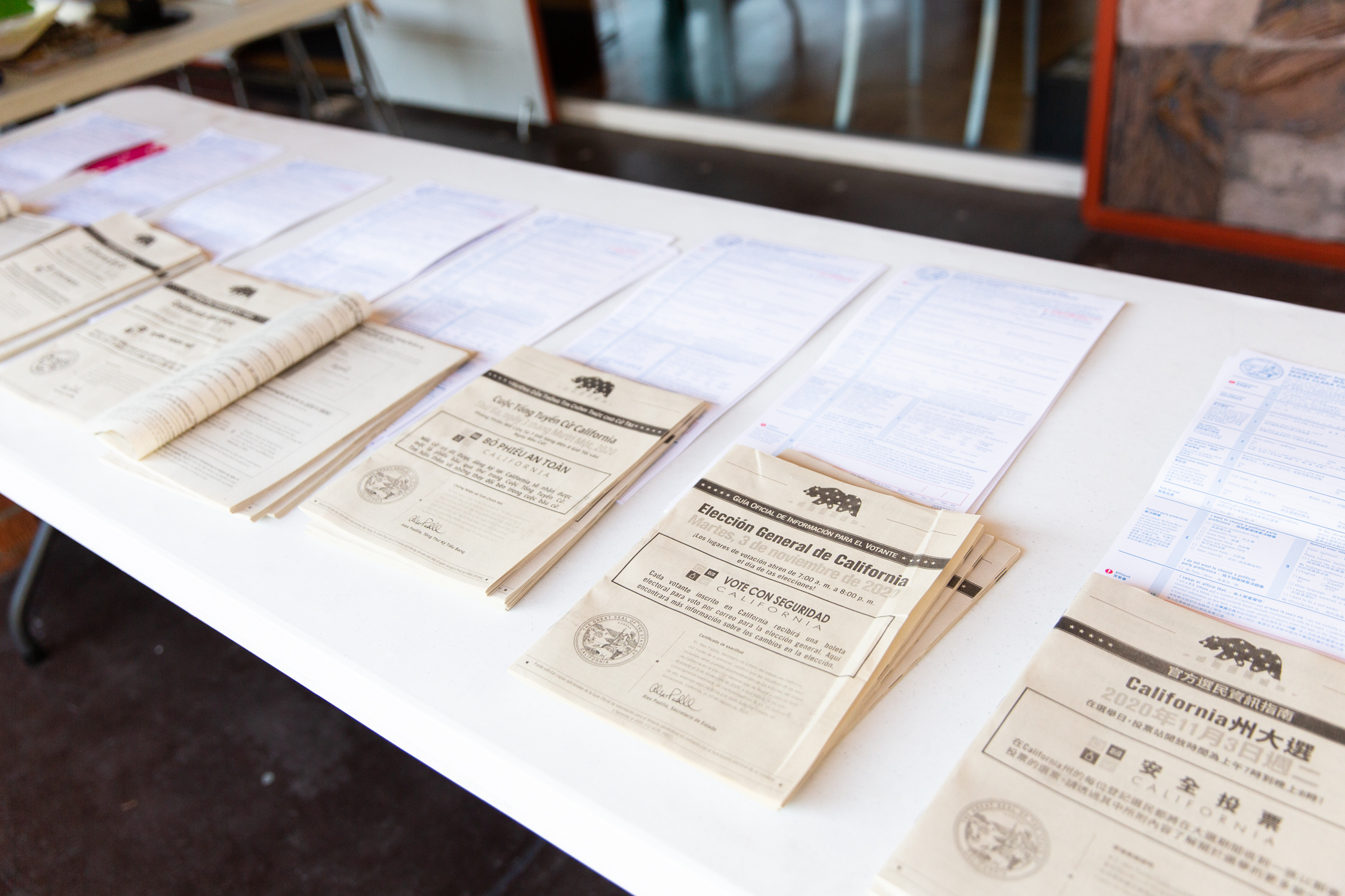When voters cast their ballots to support or oppose a local measure, it's tempting to assume that they understand what's at stake.
But when it comes to ballot language, truth is often bent for political purposes, forcing voters to deal with questions that are murky, misleading or, in some cases, outright deceptive.
That, at least, is the conclusion from the Santa Clara County Civil Grand Jury, which surveyed the roughly 50 jurisdictions within the county that are eligible for placing measures on the ballot and found bias in favor of proponents, who incidentally and not coincidentally tend to be the people writing the ballot language.
The grand jury's report, which is titled, "If you only read the ballot, you're being duped," analyzes the language that public entities craft for their ballots and identifies "tricks of the trade" that they use to garner voter support. Among the most egregious examples is Valley Water's Measure A, which squeaked to approval in June and which expands term limits for the water agency's board members from three to four terms.
Voters casting their ballots on Measure A were confronted with the question: "Shall the measure amending the Santa Clara Valley Water District Ordinance 11-01 to limit Board members to four successive four-year terms be adopted?" Because the ballot question does not inform voters of existing limits, it created the impression that the measure establishes term limits rather than expands them, the grand jury argued.
"The ballot question did not reflect what the Water District wanted to do," the grand jury wrote. "The Water District wanted to extend term limits, but it wrote the ballot question without using the words 'extend,' 'change,' or 'increase.' Instead, the Water District characterized the ballot measure as setting term limits, which is a mischaracterization of what Measure A was actually about," the grand jury wrote.
The tactic also was used in 1998, when Santa Clara County asked the voters to expand the number of terms for supervisors from three to four. Measure E asked them whether the county shall "limit the number of terms a member of the Board of Supervisors may serve to three terms, consisting of four years each?" The measure passed with 55.5% of the voters.
"By not being transparent, this tactic of ballot question drafting is tantamount to a lie by omission; it borders on deceiving the public. From Measure E in 1998 to Measure A this year, 24 years later, the climate has not changed."
In many cases, ballot questions list popular services that the measure would fund even if the measure itself doesn't really require spending of this sort. Palo Alto has two such measures: Measure K, which would establish a business tax to raise funds "for public safety, affordable housing, rail crossing safety, homeless services and general services," according to the ballot question; and Measure L, which would inform the city's historic practice of transferring funds from the municipal natural gas utility to the general fund and which purports to "support general city services such as roads; parks, libraries; climate change reduction, police, fire, emergency medical, and 9-1-1 response."
Neither measure actually requires proceeds to be spent in these areas, though the City Council tried to instill confidence for the business tax measure by passing a separate resolution signaling their intent to use business tax proceeds for public safety, rail improvements and housing. For the utility measure, the council will have full discretion on how to spend the proceeds.
Furthermore, Measure L states that the policy will be in place "until ended by voters," a clause that is common to tax and bond measures but that the grand jury found to be misleading because the actual measure does not provide any mechanism for the abolition of the funding mechanism. It is one of four measures in this November's election that contains such language. Two of them are being submitted by the city of Santa Clara, which is similarly looking to affirm utility transfers to its general fund (Measure G) and to update its business license tax (Measure H). Los Gatos also is looking to amend its business license tax by asking voters to approve Measure J.
Such language, according to the grand jury, has the effect of "falsely implying that the measure itself provided for repeal or that voters would have an opportunity to repeal the tax when they did not."
Other examples of "tricks and tactics" that the grand jury identifies in its report include using "feel good" words (like an assurance that all funds will be spent locally); submitting bond measures in which the questions state that there will be "no increase in tax rates" (which diverts voters from what's actually at issue); and including language that suggests that there would be independent audits and citizens' oversight of spending, even if these requirements aren't in the actual measure (as was the case with a Milpitas sales tax measure in 2020).
The Santa Clara County review builds on work that the Alameda County Grand Jury performed last year. The Alameda report made a case for the existence of "proponent bias" in many ballot questions. Even though the California Election Code requires "a true and impartial synopsis of the purpose of the proposed measure, and shall be in language that is neither argumentative nor likely to create prejudice for or against the measure," the Alameda grand jury found that local agencies have wide latitude in crafting such language and that citizens who wish to challenge ballot language face "an uphill battle" in obtaining a court order to amend the language.
The Santa Clara County Civil Grand Jury makes a similar case for "proponent's bias," a problem it ties to the fact that it is the supporters (cities, counties and public agencies) that propose the measure.
"Once the decision is made by the government entity to spend the money to go to ballot, a lot of pressure is put on the entity to do whatever it takes to secure a win," the report states. "For this reason, proponents of ballot measures stay focused on the result, hiring high-priced election consultants, attorneys, and opinion pollsters to carefully frame the ballot question to achieve the desired outcome. Successful elections will reward those that are behind them."
With so much at stake, proponents sometimes sacrifice "context, clarity, truthfulness and transparency in ballot question wording in favor of pure advocacy," the report states. The grand jury underscored descriptions of the Valley Water measure in local news services, which included "false," "dishonest" and "not ethical."
"What the Water District did through Measure A has severe ramifications because it creates distrust between the government agency and the people the agency is supposed to serve and protect," the report states. "Going forward, Santa Clara County residents will likely question the integrity and ethical behavior of the Water District."
To address these issues, the grand jury proposes creating an oversight commission to review ballot questions and empowering the commission to reject those that it deems biased or misleading. Another option is requiring cities and other public agencies to submit their proposed ballot language to the county counsel for review. The county counsel would be authorized to "reject non-conforming or deficient wording and to compel revisions," according to the report.
Not everyone supports such measures. Palo Alto City Attorney Molly Stump wrote a memo that argues that requiring the county counsel to review and edit local measures for charter cities would impinge on the constitutional authority of these cities to control their elections.
"The effect would be to reduce local control by shifting authority to a government entity that is less knowledgeable about and responsive to local residents," Stump wrote.
Stump wrote that her office agrees with the grand jury that "the clarity, accuracy and usefulness of ballot measure language is an important issue, and we thank them for their efforts to promote transparency and effective communication."
"In our view, however, the report overlooks important aspects of the legal framework that governs elections, leading to conclusions that are not well-supported and recommendations that will not serve our community well," the memo wrote.
Stump also took issue with the grand jury's conclusion that the words "until ended by voters" in Measure L are misleading. The measure does not include a measure-specific provision for repeal because voters already have that power under the Elections Code, her memo states.
"Under state law voters exercise that power by circulating a petition," Stump wrote. "For these reasons, 'until ended by voters' is a true statement of the law, and therefore we do not believe it is misleading."
Mayor Pat Burt also disagreed with the grand jury's finding that the wording in Measure L is misleading. He noted, however, that the council also has the power to decrease or eliminate a tax. The council cannot, however, increase a tax without voter approval — a factor that should give voters another assurance.
"The grand jury really misunderstood local election law and the language that is in Measure L is common and appropriate and intended to clarify to the voters that it would continue unless voters decided otherwise in the future," Burt said.




Comments
Registered user
Jackson Park
on Oct 14, 2022 at 5:43 pm
Registered user
on Oct 14, 2022 at 5:43 pm
It seems like the people who write an opposition statement to the proposal should also be able to submit their version of the verbiage of the title / summary.